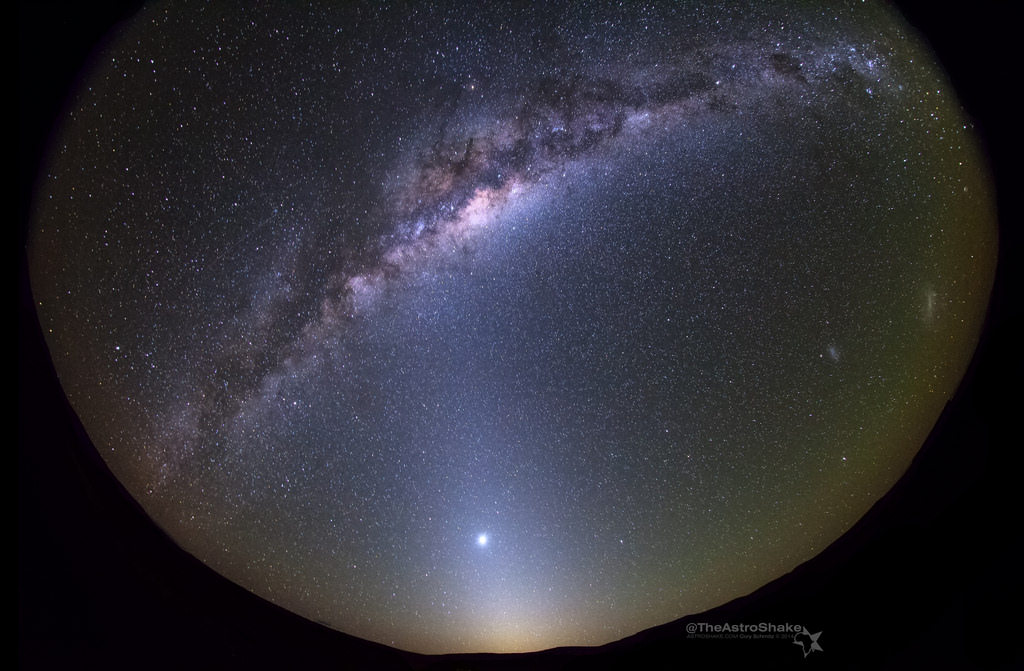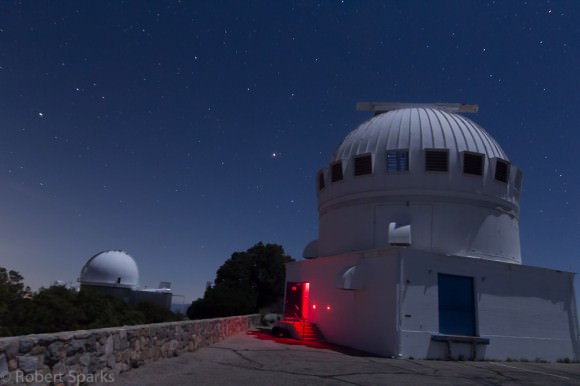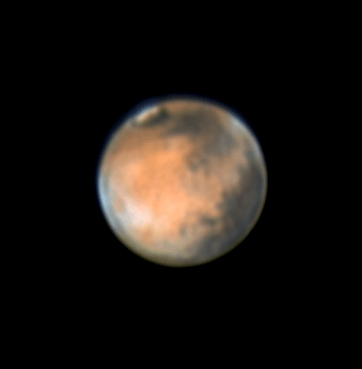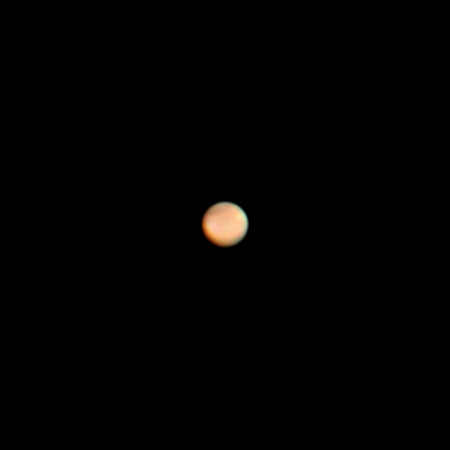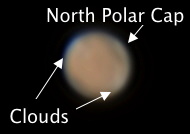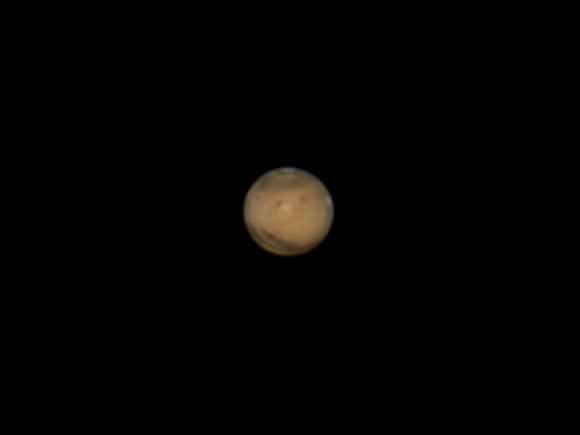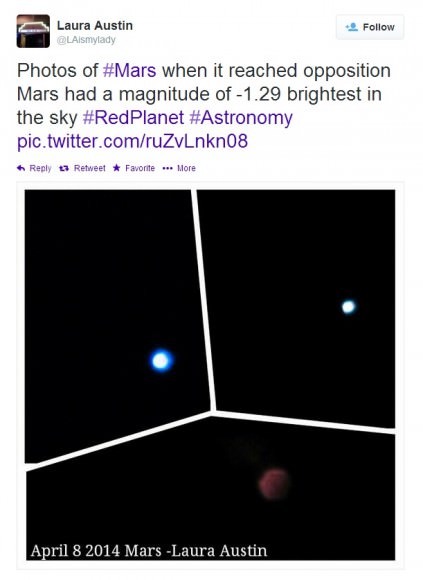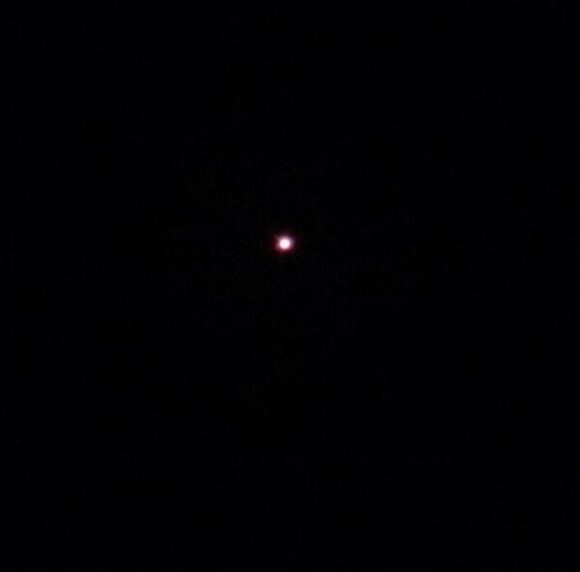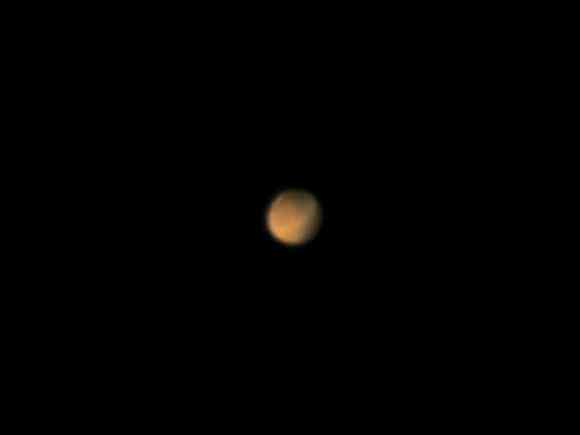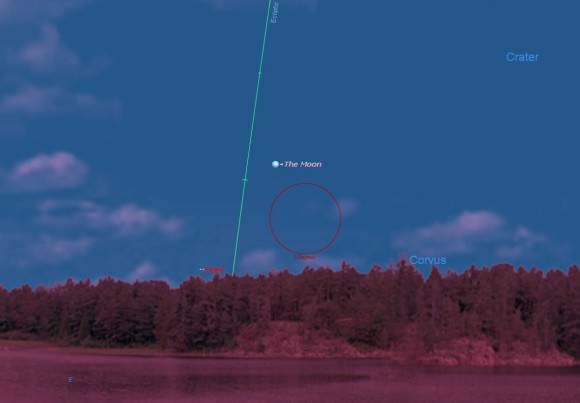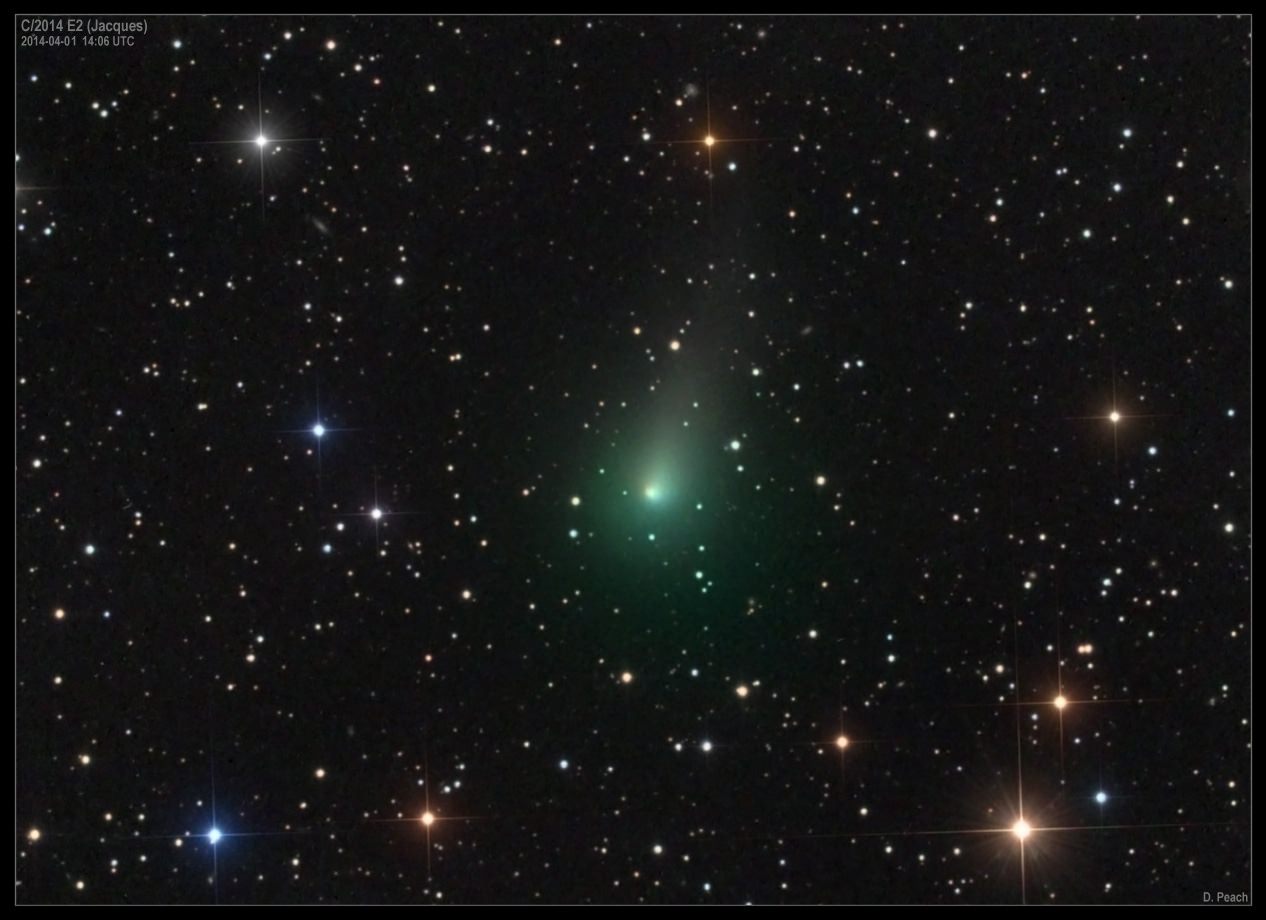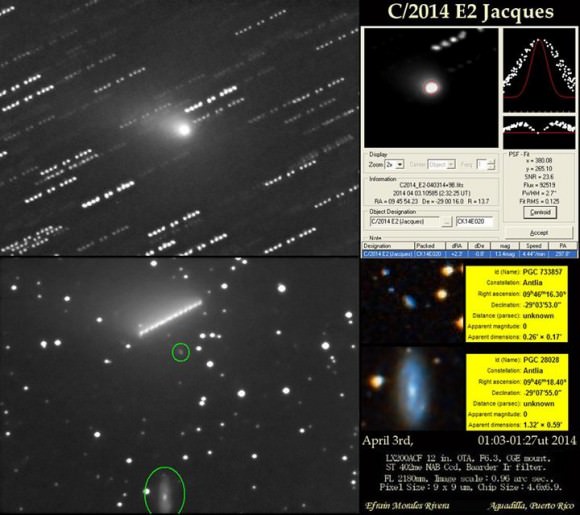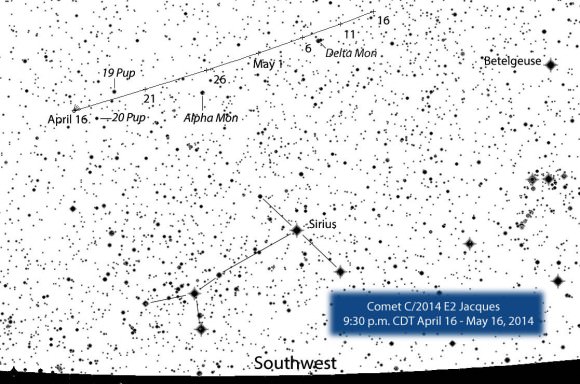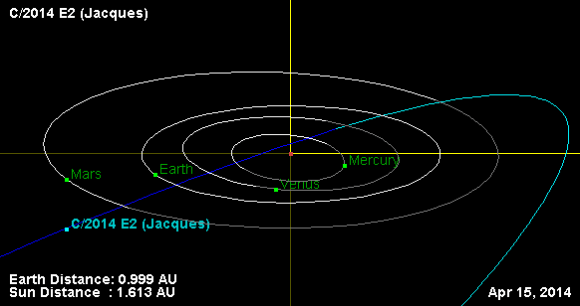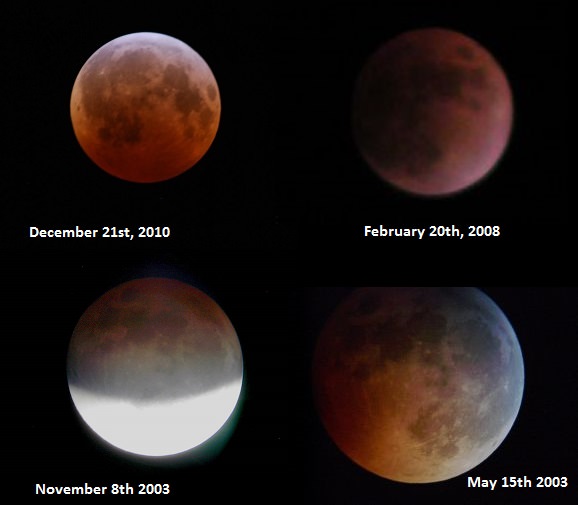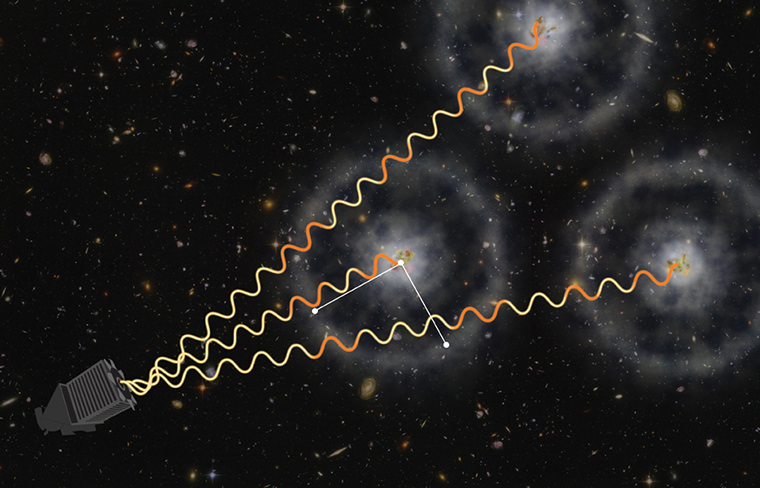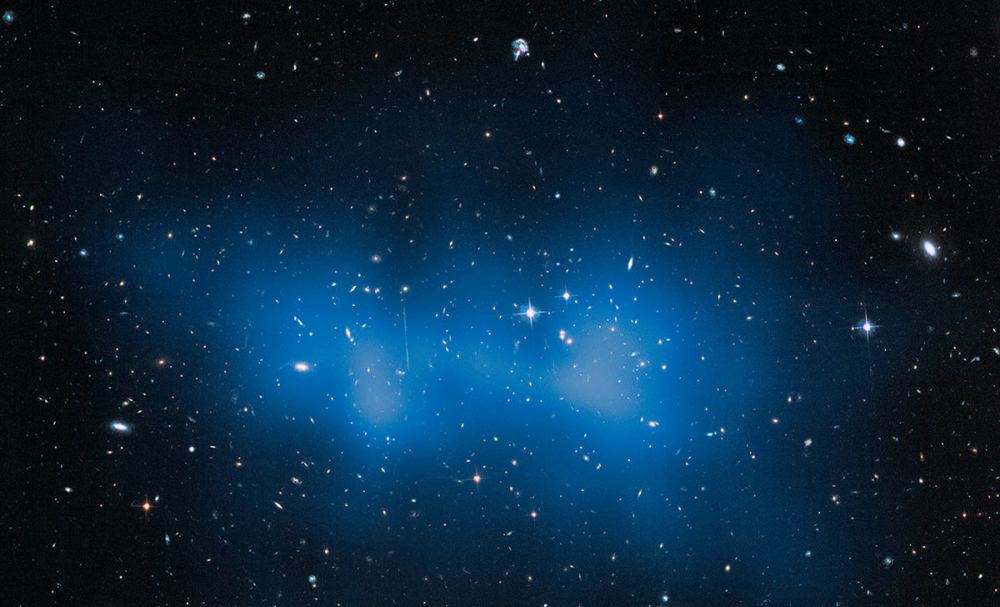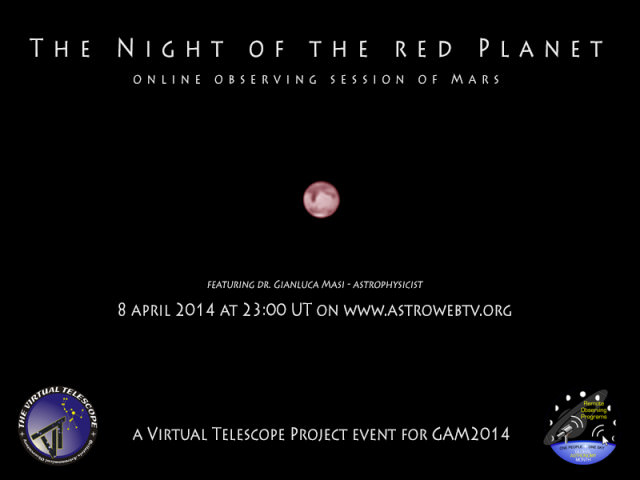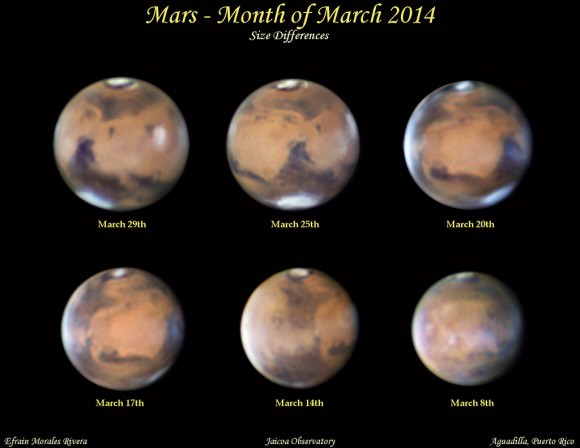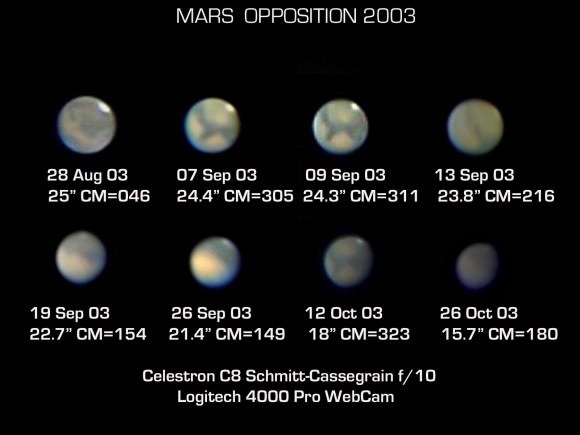Have you been following the planet Venus this season? 2014 sees the brightest planet in our Earthly skies spend a majority of its time in the dawn. Shining at magnitude -3.8, it’s hard to miss in the morning twilight. But dazzling Venus is visiting two unique celestial objects over the next week, and both present unique observing challenges for the seasoned observer.
First up is an interesting close conjunction of the planets Venus and Neptune on the morning of Saturday, April 12th. Closest conjunction occurs at 3:00 Universal Time (UT) April 12th favoring Eastern Europe, the Middle East and eastern Africa, when the two worlds appear to be just 40 arc minutes apart, a little over – by about 10’ – the apparent size of a full Moon. Shining at magnitude +7.8 and 30,000 times fainter than Venus, you’ll need a telescope to tease out Neptune from the pre-dawn sky. Both objects will, however, easily fit in a one degree field of view, in addition to a scattering of other stars.
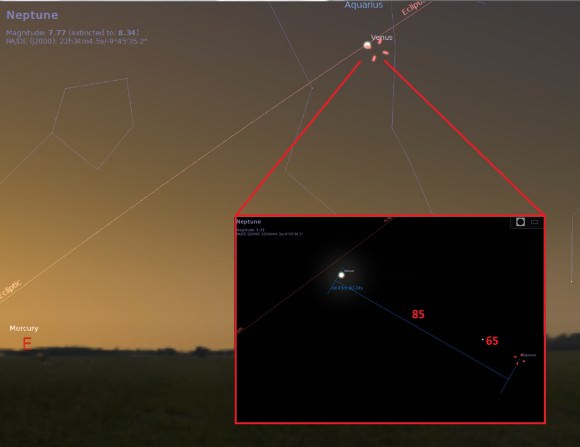
At low power, Venus will display a 59% illuminated gibbous phase 20” across on the morning of the 12th, while Neptune will show a tiny disk barely 2” across. Still, this represents the first chance for viewers to recover Neptune since solar conjunction behind the Sun on February 23rd, 2014, using dazzling Venus as a guide.
Both sit 45 degrees west of the Sun and currently rise around 3 to 4 AM local dependent on latitude.
This is one of the closest planet-planet conjunctions for 2014. The closest is Venus and Jupiter at just 0.2 degrees apart on August 18th. This will represent the brightest planet versus planet conjunction for the year, and is sure to illicit multiple “what’s those two bright stars in the sky?” queries from morning commuters… hopefully, such sightings won’t result in any border skirmishes worldwide.
Now, for the mandatory Wow factor. On the date of conjunction, Earth-sized Venus is 0.84 Astronomical Units (A.U.s) or over 130 million kilometres distant. Ice giant Neptune, however, is 30.7 AUs or 36 times as distant, and only appears tiny though it’s almost four times larger in diameter. Sunlight reflected from Venus takes 7 minutes to reach Earth, but over four hours to arrive from Neptune. We’ve visited Venus lots, and the Russians have even landed there and returned images from its smoldering surface, but we’ve only visited Neptune once, during a brief flyby of Voyager 2 in 1989.
From Neptune looking back on April 12th, Earth and Venus would appear less than 1 arc minute apart…. though they’d also be just over one degree from the Sun!
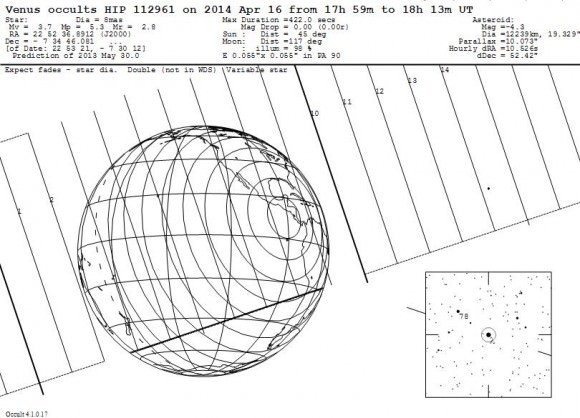
But an even more bizarre event happens a few days later on April 16th, though only a small region of the world in the South Pacific may bare witness to it.
Next Wednesday from 17:59 to 18:13 UT Venus occults the +3.7 magnitude star HIP 112961 also known as Lambda Aquarii on the morning of April 16th 2014.
Venus will be a 61% illuminated gibbous phase 19” in diameter. Unfortunately, although North America is rotated towards the event, it’s also in the middle of the day.
The best prospects to observe the occultation are from New Zealand and western Pacific at dawn. The star will disappear behind the bright limb of Venus in dawn twilight before emerging on its dark limb 5 minutes later as seen from New Zealand.
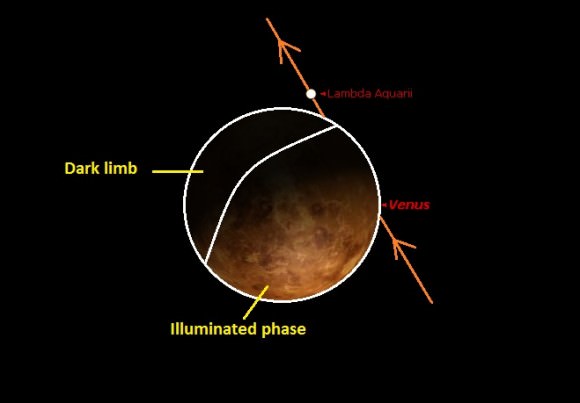
Note: New Zealand switched back to standard time on April 6th – it’s currently Fall down under – and local sunrise occurs around ~7:40 AM.
Lambda Aquarii is a 3.6 solar mass star located 390 light years distant. As far as we know, it’s a solitary star, though there’s always a chance that a companion could make itself known as it emerges on the dark limb of Venus. Such an observation will, however, be extremely difficult, as Venus is still over 700 times brighter than the star!
North Americans get to see the pair only 20’ apart on the morning of the 12th.
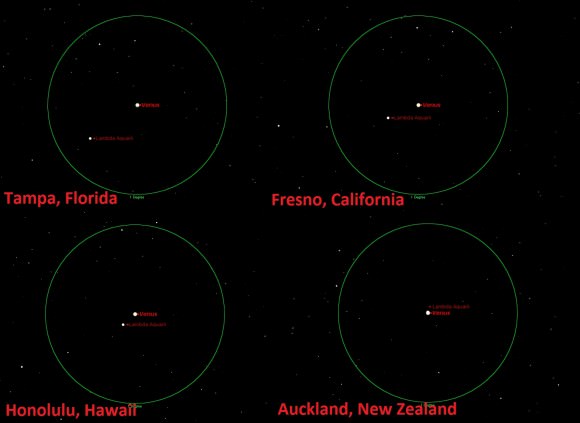
And further occultation adventures await Venus in the 21st century. On October 1st, 2044 it will occult Regulus… and on November 22nd, 2065 it will actually occult Jupiter!
Such pairings give us a chance to image Venus with a “pseudo-moon.” Early telescopic observers made numerous sightings of a supposed Moon of Venus, and the hypothetical object even merited the name Neith for a brief time. Such sightings were most likely spurious internal reflections due to poor optics or nearby stars, but its fun to wonder what those observers of old might’ve seen.
… and speaking of moons, don’t miss a chance to see Venus near the daytime Moon April 25th. Follow us as @Astroguyz on Twitter as we give shout outs to these and other strange pairings daily!

